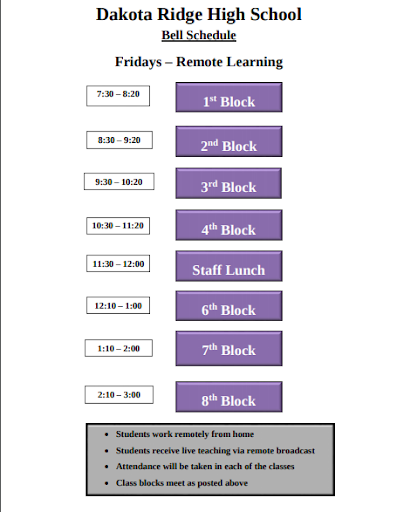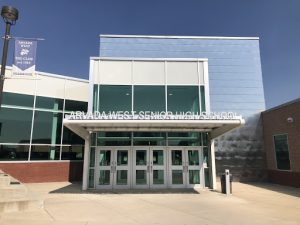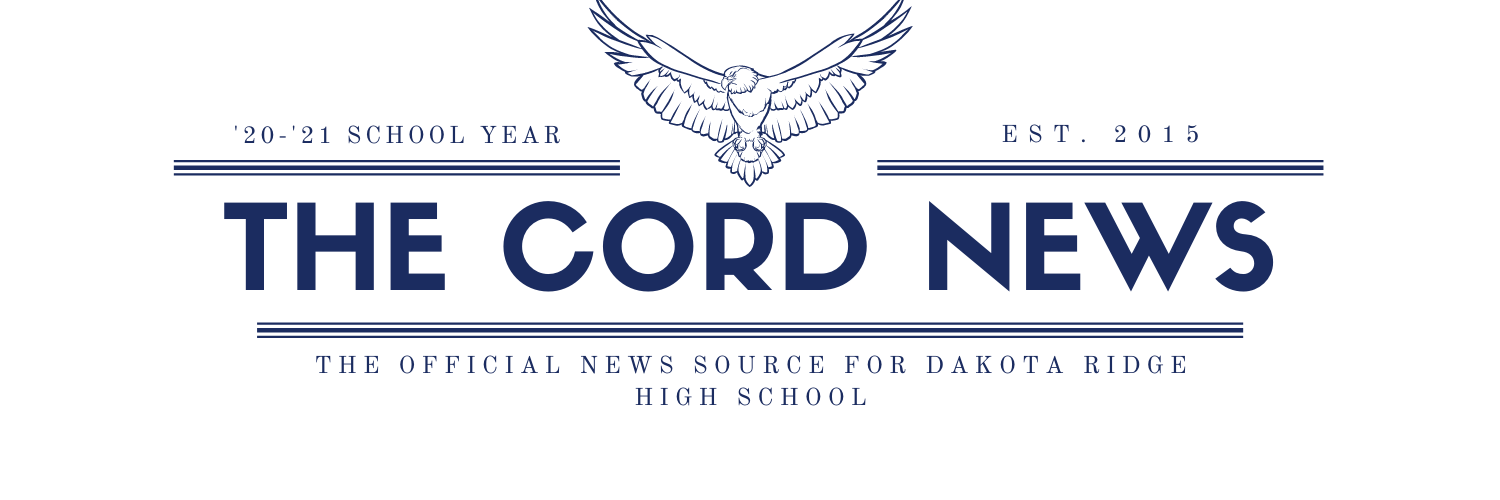Debate Over High School Synchronous vs. Asynchronous Learning on Fridays Continues Across Jeffco

Friday synchronous remote learning schedule at Dakota Ridge High School gives students a structured day with all classes to attend.
October 7, 2020
Access to quality face-to-face time with peers is important, but some students want to sleep in.
Ten public high schools in Jefferson County have taken the path of asynchronous remote learning on Fridays, while seven have chosen synchronous.
Asynchronous learning is a remote method that allows students to receive daily assignments without having to attend classes at a specific time. Synchronous learning, however, implements a schedule of classes where students attend Zoom calls or work on material at the same time as the rest of the class.
Though some people believe the synchronous schedule is more effective for learning, others enjoy the idea of students being able to learn at their own pace.
Dakota Ridge has chosen to implement synchronous remote learning on Fridays, a topic of controversy among the students and teachers. Sophomore Halli Hill supports the idea of switching over to asynchronous learning, where she can work through assignments on her own time.
“I’ll be engaged for the first part, but then, c’mon now, I’m just staring at my computer screen, I’m going to zone out,” Hill said about synchronous learning.

Some teachers believe the structure of remote synchronous Fridays for students helps them manage their time more efficiently and allows them more opportunity for conversations with people during the pandemic.
“I personally think kids need human contact, and you know, at least we have Zoom,” Dakota Ridge math teacher Laurie Lawless said. “I just think students need the schedule and rigor of being in one place at a time.”
Arvada West High School is one of the 10 high schools in Jefferson County to implement asynchronous learning on Fridays. A-West sophomore Levi Yocum claims he enjoys working at his own pace and finds asynchronous learning to be a much-needed break from scheduled classes.
“Me feeling in control of my work helps my stress levels and helps me relax after a long week of school,” Yocum said.
While some students lean towards the flexibility of asynchronous learning, some methods need to be improved upon since the first remote experience from spring earlier this year. As students and staff originally struggled with the new platform, they found it difficult to maintain instruction through only asynchronous learning.
“We found a significant gap in student engagement…primarily due to a lack of clarity and structure,” Dakota Ridge Principal Jim Jelinek said. “We were really attempting to build a new airplane while attempting to fly the airplane.”
This confusion and uncertainty led to Dr. Jelinek implementing the current synchronous remote schedule on Fridays.
So which method of remote learning is more efficient?
As schools progress through the year and experience the effects of asynchronous versus synchronous learning, average proficiency and attendance may be the answer.
Regardless of how high schools are implementing Friday learning, most can agree that students and staff are working hard to keep up with life in the Covid-19 pandemic.
“I’m grateful that we have the technology, because if we didn’t have things like Zoom or Google classroom, I don’t think we could have done it,” Lawless said. “I’m grateful that this is happening now, and not 10 years ago.”



